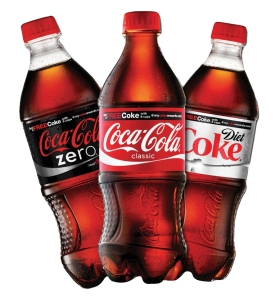
it’s Coca Cola to the rescue
With a title so incendiary, I’ve really thrown down the gauntlet! And the great irony is that I have no taste for Coca-Cola (or even Pepsi, or their respective derivatives, for that matter–a “tradition” that extends back to my early youth), despite parental encouragement to try these carbonated drinks with a pinch of salt. Salt, I scoffed. Would salt keep the bubbly from traversing through my nose and depressurizing my senses? Who’s the adult here, eh?
Curiously though, I’m partial to the odd Doctor Pepper and raspberry Canada Dry Ginger Ale — the latter, when uncorked and left to sit in a semi-open state for a couple of days in the fridge gives it a deliciously flat taste! And while I won’t imbibe Coke or Pepsi, I will imbibe the various juices and non-carbonated concoctions (no, tonic water does not fall within this category) of these two warring soft drink manufacturers. And nothing beats V8 juice (sorry folks, that’s the Campbell’s soup company that I have to thank) — what I affectionately refer to as Blood — or V8 Fusion, IMHO.
But I digress. Still, I’ve got to admit that the uniquely quasi-hourglass design of Coke plastic bottles lends itself to better application for sprains, strains and pulls. Just fill them to three-quarters full with tap water and stick it in the freezer for a few hours. When sports-related and vigorous work-related injuries occur, just reach for that bottle of “Coke clear” and hold to the affected region–hand, wrist, leg, foot, forehead–take your pick; it’s shaped to conform to your body. You’ll feel relief and satisfaction soon, and one that’s not fueled by caffeine or sugar or a secret recipe. Take a bow, you Coca-Cola marketing geniuses, and please ideate a prickly pear juice soon!
SEPT 17, 2013 ADDENDUM: Here’s one more reason to like PET bottles in general: deployment of the concept (pioneered by Brazilian Alfredo Moser in 2002) of mounting 1.5L plastic bottles filled with water and bleach to the roof, enables delivery of light during the day, with output that’s equivalent to that of a 55W incandescent light bulb with a 5-year lifetime. It’s a zero carbon emitting idea with substantial GHG emissions savings that has found widespread application in developing countries where electricity is still at a premium. See Liter of Light for more details.
